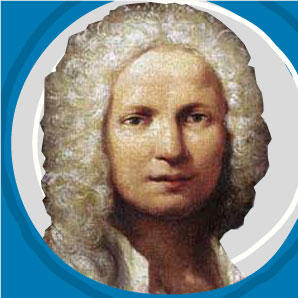Antonio Vivaldi Biography - A Very Quick Guide
Artist:
Antonio Vivaldi
Born:
March 4,1678 , Venice
Died:
July 28, 1741 , Vienna
Antonio Lucio Vivaldi, born in 1678, is inseparably linked with his hometown of Venice. As a child, he learned music from his father, who was himself a talented violinist, and at 15 he began training for the priesthood, eventually being ordained in 1703.
Vivaldi spent nearly his entire professional life at the Ospedale della Pietà, an institution for the illegitimate daughters of Venetian nobles. He joined the staff in 1703 as a music teacher, working with the girls for whom music formed a central part of their education. His responsibilities included writing new compositions for major religious festivals, teaching singing and instrumental performance, and preparing the students to play a wide range of instruments. His importance to the institution grew, and in 1716 he was appointed maestro di concerti. Under his guidance, the Ospedale’s choir and orchestra earned an impressive reputation.
Over his lifetime, Vivaldi composed more than 500 instrumental concertos and many sacred choral pieces. He also wrote around 40 operas, intended not for the Ospedale but for Venetian theatres.
In 1740, Vivaldi relocated to Vienna, possibly seeking a post at the imperial court, but found little success. He died there in poverty in 1741.
By the time of his death, Vivaldi’s popularity had waned, and few of his works remained in circulation. He was almost entirely forgotten until 1926, when a trove of his manuscripts - including the now-famous Four Seasons-was rediscovered.
Vivaldi spent nearly his entire professional life at the Ospedale della Pietà, an institution for the illegitimate daughters of Venetian nobles. He joined the staff in 1703 as a music teacher, working with the girls for whom music formed a central part of their education. His responsibilities included writing new compositions for major religious festivals, teaching singing and instrumental performance, and preparing the students to play a wide range of instruments. His importance to the institution grew, and in 1716 he was appointed maestro di concerti. Under his guidance, the Ospedale’s choir and orchestra earned an impressive reputation.
Over his lifetime, Vivaldi composed more than 500 instrumental concertos and many sacred choral pieces. He also wrote around 40 operas, intended not for the Ospedale but for Venetian theatres.
In 1740, Vivaldi relocated to Vienna, possibly seeking a post at the imperial court, but found little success. He died there in poverty in 1741.
By the time of his death, Vivaldi’s popularity had waned, and few of his works remained in circulation. He was almost entirely forgotten until 1926, when a trove of his manuscripts - including the now-famous Four Seasons-was rediscovered.
Top Pieces on 8notes by Antonio Vivaldi
Four Seasons (Autumn)
'Spring' from the Four Seasons
Spring from 'The Four Seasons'
Spring from The Four Seasons
Autumn from the Four Seasons
CONCERTO in D major 1st movement (complete)
Concerto in G 1st Movement (arranged Bach)
Concerto in G 2nd Mvt Adagio (arranged Bach)
Concerto in G 3rd Mvt Allegro (arranged Bach)
'Spring' from the Four Seasons
Spring from 'The Four Seasons'
Spring from The Four Seasons
Autumn from the Four Seasons
CONCERTO in D major 1st movement (complete)
Concerto in G 1st Movement (arranged Bach)
Concerto in G 2nd Mvt Adagio (arranged Bach)
Concerto in G 3rd Mvt Allegro (arranged Bach)
